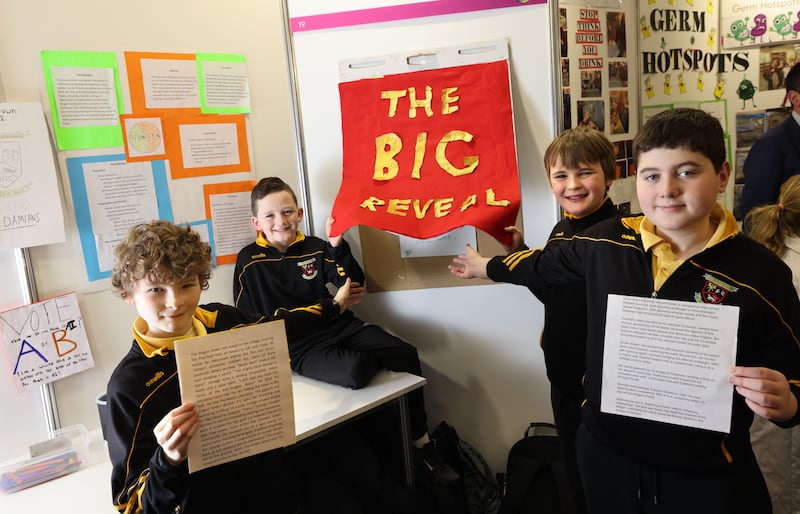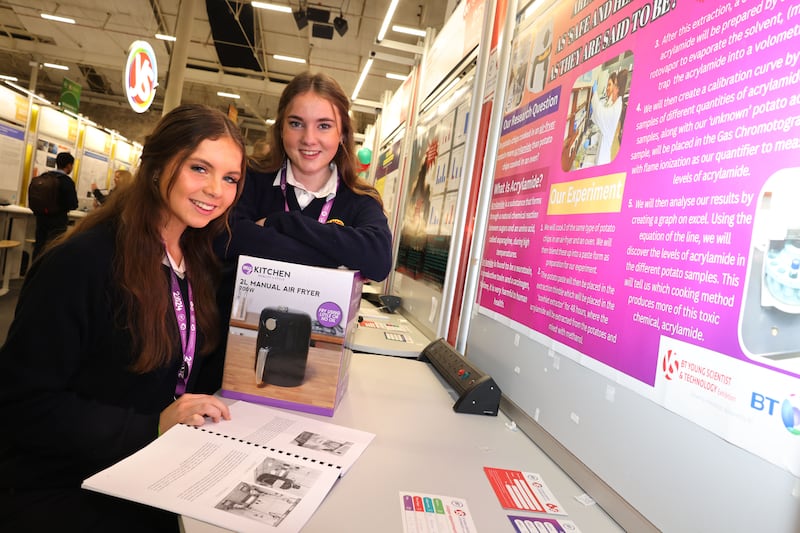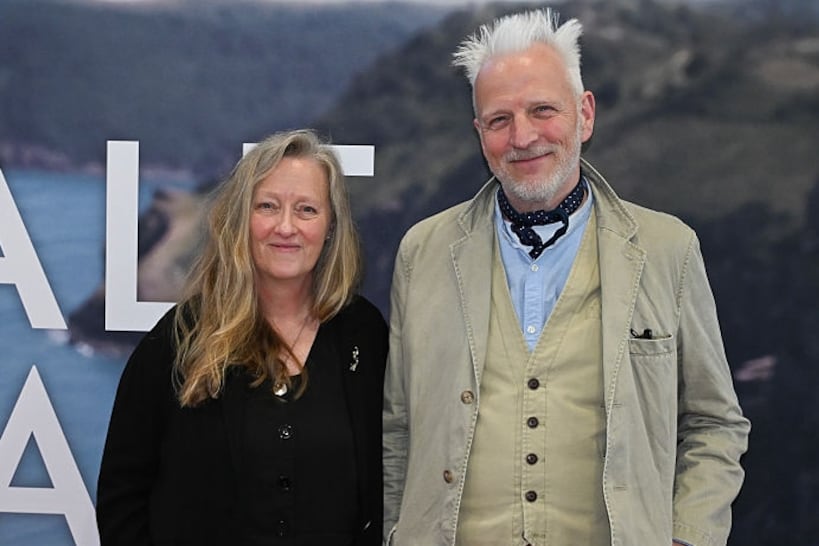A flood of AI-generated content is in circulation, so sixth class pupils from St Damian’s National School in Perrystown, Dublin, decided to investigate if people can tell the difference between Chat GPT content and a human creation.
They displayed the surprising outcome of their research at this year’s Primary Science Fair, run in conjunction with the BT Young Scientist & Technology Exhibition (BTYSTE) at the RDS.
As pupil Rory McMullen explained, they asked Chat GPT to write a 100-word story about a hero slaying a dragon, and for comparison purposes he wrote a story with the same brief.
With the help of teacher Rob Kelly, they surveyed his 25 classmates on which story they preferred, which was AI generated and what led them to that conclusion. Some 44 per cent said his story was the AI version, while there was a clear preference for the AI story. “I wasn’t surprised,” Rory admitted, “It wasn’t my best story.”
READ MORE

There was a high awareness of AI in the class, which had an equally divided view on whether it was a good thing or not. He fears it will eliminate the jobs of those in the creative business; especially writers.
The public had the opportunity to vote which story was which. Having voted, there was “the big reveal” and a red curtain was pulled back to indicate if you were right. This writer got it wrong – believing the vivid description in one story was AI generated – much to amusement of the young researchers. In a way, it was a compliment to Rory’s writing ability.
Storm Agnes was raging outside St Kilian’s Senior National School in Tallaght, Dublin, when fourth class pupils under teacher Dónal Dignam, decided to test the accuracy of weather forecasts.
Wearing a rain clouds hat, Kitty Moran said they decided to put Met Éireann, BBC and a Norwegian weather service to the test, from four days out and track forecasts on television and radio; cross checked with what they experienced when they stepped into the schoolyard.
The BBC and Met Éireann were most accurate, added fellow pupil Kai Stuart, wearing a snow clouds hat. “The BBC was very good on wind speed and Met Éireann best on temperature and most accurate the day before.”
The sixth class in St Attracta’s Senior National School in Ballinteer, Dublin, were concerned about fast fashion driving climate change and nature loss, and decided to generate a multimedia campaign, with guidance from teacher Ciara Leonard, to inform young people – having studied its effects.

What motivated them was “people were not aware of the consequences of what they buy”, said Cara Waters.
They made a video on how to counter fast fashion, through recycling, reuse and “making new things”, complete with QR codes with detailed instructions, such as how to make a tote bag from old T-shirts.
Everyone in the class made a tote bag, which passed the fashionability test, said Erin McKeon, “They looked good.”
They also generated a user-friendly QR code to check if a brand is sustainable and good for nature; “a funfact book” to highlight the environmental consequences of fast fashion on Planet Earth, and analysed the sustainability performance of two major brands; one cheap and the other expensive.
They also made “tell us the truth” bags customised to illustrate badly-affected areas and to highlight greenwashing and charted the lifecyle of a T-shirt.
The fair was opened by Minister for Children, Equality, Disability, Integration and Youth, Roderic O’Gorman. It encourages third to sixth class primary school students to develop their interest in science, technology, engineering and maths (Stem) in a non-competitive environment. It also inspires them to become future participants in BTYSTE.
Mr O’Gorman said: “I’m delighted to open the Primary Science Fair. Over many years, the exhibition has been a hugely impressive and valuable opportunity for children to showcase their creativity and expertise, across a wide range of Stem topics. I have no doubt that it helps nurture a love of science for the many children involved.”
BT Ireland managing director Shay Walsh added: “The BTYSTE has stood the test of time by continually evolving and key developments included the Primary Science Fair in 2001. It’s a fantastic way to nurture a passion for science and technology at primary school level and encourage classes to be curious, be collaborative, and have fun.”
The BTYSTE, marking its 60th anniversary this week, runs until Saturday January 13th.
- Sign up for push alerts and have the best news, analysis and comment delivered directly to your phone
- Find The Irish Times on WhatsApp and stay up to date
- Our In The News podcast is now published daily – Find the latest episode here














